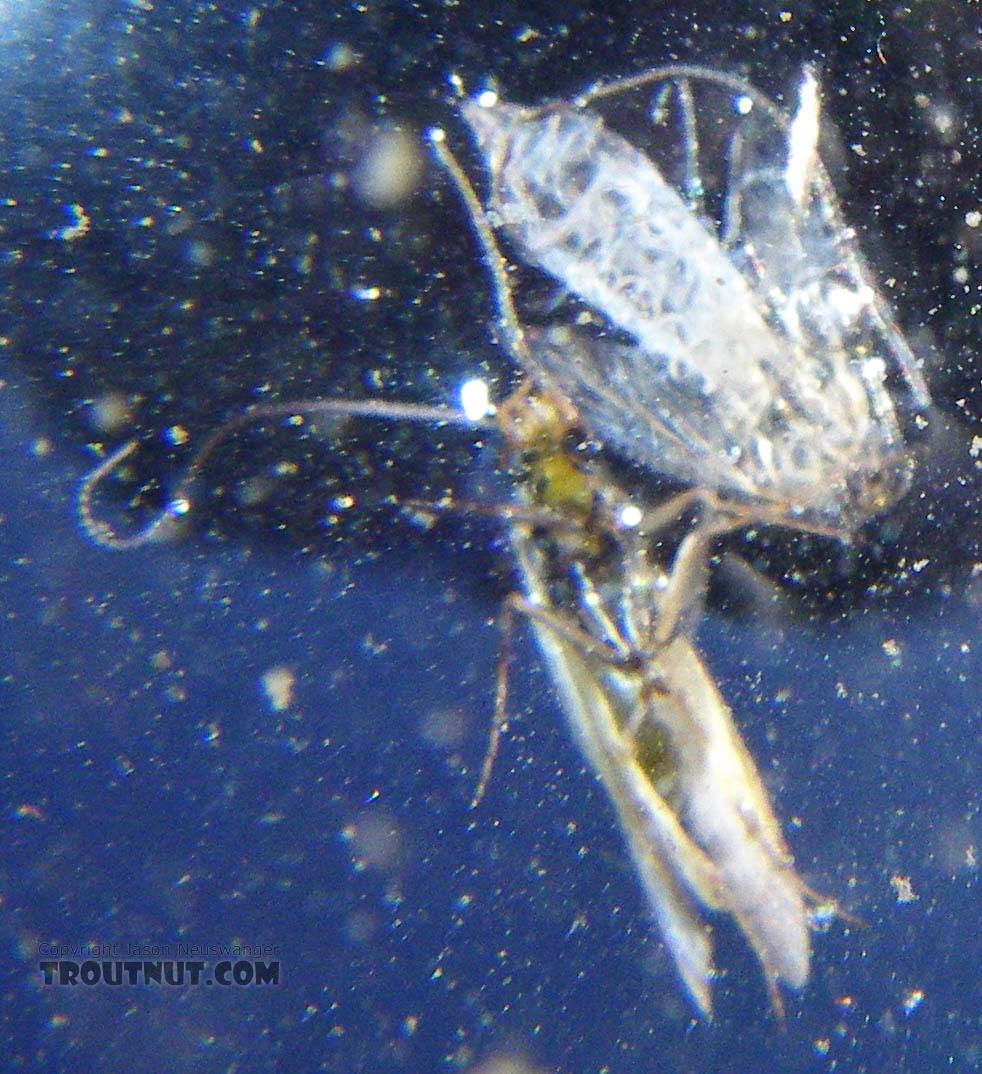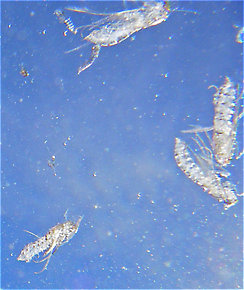

This Brachycentrus "Apple Caddis" struggled more than its kin in escaping its pupal skin, enabling me to take an underwater picture of it from directly below. This is sort of a trout's eye view, but I used the flash for the picture so the transparent shuck (
In this picture: Caddisfly Species Brachycentrus appalachia (Apple Caddis).
Troutnut.com is a collection of pictures and information about fly fishing. Fly fishermen, fly tiers, and trout enthusiasts of all stripes can learn more about life beneath the surface of trout streams, as well as how to better imitate aquatic insects with artificial flies to catch trout. There are aquatic insect pictures, underwater pictures, landscape pictures, and a comprehensive reference to the common names of trout stream insects.